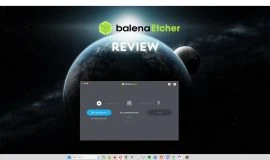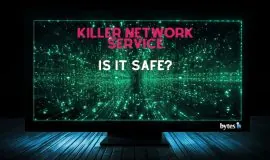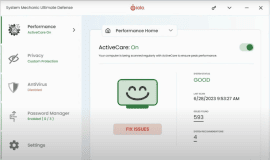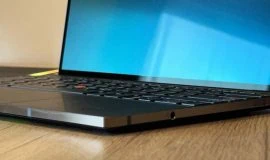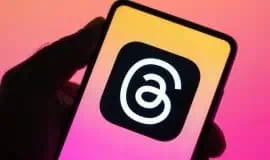Apps and services that promise to enhance the performance of your computer are usually akin to snake oil; novel as an idea but ultimately a scam that feeds off people’s good will and general ignorance of the subject matter. One of the few notable exceptions to that is CCleaner, a trustworthy application that an actually help you fix quite a few of your computer’s issue. Of course, knowing exactly what CCleaner does, how its cleaning utilities work and what you should or should not mess around with is crucial to ensuring that the app does its job properly and that it will not create even more annoyances.
One of the most important aspects that has led to CCleaner becoming so popular is that the application is extremely easy to use and efficient even in the hands of users with little knowledge of the app. However, if you spend the time to configure it, CCleaner can be so much better. And since it is also good at remembering your exact configuration options, you will only have to optimize it a couple of times.
Carefully select what you delete
The Cleaner utility automatically scouts a bunch of areas in your computer and then deletes everything it finds, with your permission. By default, the utility lists files from quite a few areas, including your browser and your PC’s temporary files. And while all of those files can be safely deleted without causing harm to your computer, it does not mean they should. For instance, deleting the cached files in your browser and Windows Explorer might free up some space but it will also slow those areas down, at least for a short time until the cache is properly rebuilt. Other items you should think twice about deleting are things like taskbar jump lists and autocomplete entries. For some, those are privacy concerns that have to be eliminated but for others, deleting them will be very inconvenient. The bottom line is that removing those files is not worth it if your only concern is to save space so make sure you go through all of the listed items before deleting everything in your way.
Delete files securely
Now that we are on the subject of deleting stuff, you should probably know that CCleaner includes an option that allows it to automatically delete all files securely. To enable it, go to Options > Settings and select the “Secure file deletion” option. The level of security can be determined by the dropdown menu but a single pass will suffice for the average user. Note that deleting files this way takes considerably more time than usual so you may want to enable the option for specific items only. Also note that this only affects files deleted via the Cleaner utility.
Include and exclude files
The default areas where CCleaner peeks at in order to find and delete unnecessary files are fine as a starting point but you should think of them more like customizable templates than finalized solutions. The Options section allows you to include and exclude custom files and folders so that CCleaner can clean them up or leave them be, depending on what you are trying to accomplish. Users get the additional option of excluding Registry keys on top of files and folders but that operation should be reserved for more advanced users. Finally, you can include or exclude specific file types such as .tmp for temporary files.
Choose which cookies you want to keep
When analyzing your cookies, CCleaner automatically excludes a variety of files that come from popular websites such as Google, Facebook and Twitter so that your user information is always available when you visit them. For most web services, this means you will not have to log in your account every single time because your credentials will not be deleted by Cleaner. Of course, there is a good chance you want to keep that kind of data for other websites too so go to Options > Cookies and find the cookies you want to keep. You can also right-click on either one of the Cookies panels and select the Intelligent Scan option so CCleaner can find even more items from those popular services.
Wipe entire drives
One of the best ways to freshen up a removable storage device is to securely wipe it and then format it back to its original state. While CCleaner cannot help with the latter, it can certainly do wonders for the first part. The Drive Wiper utility included in the Tools section allows you to securely wipe an entire drive, whether that it comes from a USB stick or a hard drive in your computer. Note that there are two options in the utility. The “Free Space Only” option will simply overwrite empty areas of your computer so that deleted files cannot be recovered whereas the “Entire Drive” option will completely empty your device as if you had just bought it.
Forget about the Registry Cleaner
The Windows Registry plays host to a seemingly endless amount of entries as the database constantly shifts and turns to accommodate your needs. Microsoft could certainly do a better job of maintaining the Registry but that does not mean you should use third-party utilities to manage it. Even if you remove a few hundred entries from the Registry, the amount of space you will save is completely negligible. In rare occasions where a Registry entry is causing issues to your computer, its manual removal is recommended. Automated utilities, even very safe ones like CCleaner’s, can sometimes remove important entries by mistake which can cause even bigger problems with your PC. Should you insist on running the tool, at least create backups of your Registry so that it can be restored in case something goes horribly wrong.
Don’t forget about CCleaner Portable, the same version of the software but without the need of being installed on your system. Basically, load it up on an USB stick and take it with you anywhere.
Manage installed programs
CCleaner includes an app management utility which is a bit more advanced than the native one in Windows. The utility lists far more apps than the default one and it also allows you to rename most entries. Custom names will also appear in the default uninstallers, both in the Settings (Windows 8 + 10) and in the Control Panel (all Windows versions). In addition to that, clicking on the “Save to text file” button will allow you to get a list of your installed programs so that you can find them again quickly on another PC.
Manage startup apps and services
In Windows, startup items can be managed through a wide variety of utilities and while it is not CCleaner’s main job, it performs quite well in it anyway. The startup tool features quite a few different sections for Windows, your browsers, various scheduled tasks and more. Before applying any changes, make sure that you research each item on the list and even then, select the “Disable” option instead of the “Delete” one as that may cause a whole array of new issues on your PC.










